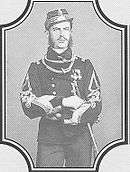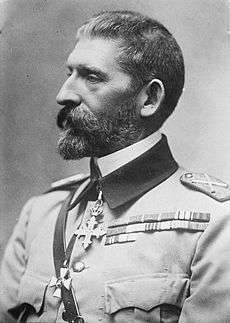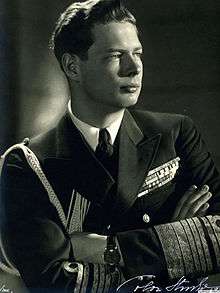Germans of Romania
| Total population | |
|---|---|
| (36,884 (2011 census) ) | |
| Regions with significant populations | |
| Transylvania, Banat | |
| Languages | |
|
mainly German in the dialects or variants such as Swabian German and the Transylvanian Saxon dialect as well as Standard German (native language/mother tongue) also Romanian (official/national language for formal and commercial purposes to all fellow Romanian countrymen (especially native ethnic Romanians and other minority ethnic groups of non-German origin) as well as medium of communication amongst the current majority of the younger and older generations of the ethnic minority and also the first language of today's generation of ethnic Germans, being majority monolingual Romanian speakers including those whom confessed to be bilingual). | |
| Religion | |
| Lutheranism and Roman Catholicism |
.png)
Germans in Romania (2002 census)
The Germans of Romania or Rumäniendeutsche are an ethnic group of Romania. They were of a number of 786,000 of Germans in interwar Romania in 1939,[1][2] a number that had fallen to 36,884 by 2011 in modern Romania. They are not a single group; thus, to understand their language, culture, and history, one must view them as independent groups:
- Transylvanian Saxons – the largest and oldest, often simply equated with the Germans of Romania
- Satu Mare Swabians and most Banat Swabians, groups of Danube Swabians in Romania
- Transylvanian Landler Protestants
- Zipser Germans in Maramureş (Borşa, Vişeu)
- Regat Germans, including the Dobrujan Germans
- Bukovina Germans (Suceava, Rădăuți, Târgu Neamț, Gura Humorului and Câmpulung Moldovenesc, also indigenous to Cernăuți between 1918–1940)
- Bessarabia Germans (for the period 1918–1940)
See Democratic Forum of Germans in Romania for their official representation.
House of Hohenzollern in Romania
Members of the German family of Hohenzollern who ruled over Romania for a period:
- 1866–1914: Karl I (also Prince of Romania)
- 1914–1927: Ferdinand
- 1927–1930: Michael
- 1930–1940: Karl II
- 1940–1947: Michael (again)
Notable communities for the German minority (at least 1%)
- Petrești (Petrifeld) – 27.32%
- Urziceni (Schinal) – 23.91%
- Brebu Nou (Weidenthal) – 23.52%
- Cămin (Kalmandi) – 22.62%
- Beltiug (Bildegg) – 11.4%
- Tiream (Wiesenfeld) – 10.91%
- Laslea (Großlasseln) – 7.3%
- Anina (Steierdorf) – 5.65%
- Ațel (Hatzeldorf) – 5.38%
- Cârlibaba (Mariensee) – 5.06%
- Saschiz (Keisd) - 5.0%
- Biertan (Birthälm) - 4.6%
- Ardud (Erdeed) – 4.47%
- Vișeu de Sus (Oberwischau) – 4.03%
- Deta (Detta) – 4.02%
- Tomnatic (Triebswetter) – 3.88%
- Semlac – 3.6%
- Sântana (Sanktanna) – 2.91%
- Jimbolia (Hatzfeld) – 2.86%
- Măieruş (Nußbach) - 2.6%
- Lovrin (Lowrin) – 2.35%
- Carei (Großkarol) – 2.26%
- Buziaș (Busiasch) – 2.15%
- Periam (Perjamosch) – 2.15%
- Sânnicolau Mare (Großsanktnikolaus) – 2.1%
- Pâncota (Pankota) – 2.07%
- Lenauheim – 1.87%
- Lugoj (Lugosch) – 1.85%
- Miercurea Sibiului (Reußmarkt) – 1.84%
- Reșița (Reschitz) – 1.71%
- Ciacova (Tschakowa) – 1.64%
- Cisnădie (Heltau) – 1.51%
- Mediaș (Mediasch) – 1.48%
- Sighișoara (Schäßburg) – 1.43%
- Oțelu Roșu (Ferdinandsberg) – 1.42%
- Timișoara (Temeswar) – 1.37%
- Nițchidorf (Nitzkydorf) – 1.37%
- Merghindeal (Mergeln) – 1.32%
- Beba Veche (Altbeba) – 1.29%
- Hărman (Honigberg) – 1.22%
- Lipova (Lippa) – 1.19%
- Becicherecu Mic (Kleinbetschkerek) – 1.15%
- Caransebeș (Karansebesch) – 1.07%
- Bocșa (Neuwerk) – 1.04%
- Satu Mare (Sathmar) – 1.01%
- Sibiu (Hermannstadt) – 1%
- Mănăstirea Humorului – 1%
- Agnita (Agnetheln) – 1%
Education
There is a German school in Bucharest, Deutsche Schule Bukarest.
Notable German-Romanians
- Horst Köhler (Bessarabian German), the former President of Germany, whose parents were from Romania
- Herta Müller (Banat Swabian), Nobel Prize-winning author who has depicted the history of Romanian Germans
- Klaus Iohannis (Transylvanian Saxon), the current President of Romania
- Karl Schmidt (Bessarabian German), former mayor of Chișinău, currently in the Republic of Moldova
- Hermann Oberth (Transylvanian Saxon from Schäßburg), pioneer of rocket development
- Helmuth Duckadam (Banat Swabian), former football goalkeeper
- Johnny Weissmueller (Banat Swabian from Freidorf, Temeschburg), gold medal-winning Olympic swimmer, actor noted for role of Tarzan
- Nikolaus Lenau (Banat Swabian from Lenauheim), renowned lyric poet
- Stefan Hell, (Banat Swabian), Nobel Prize in Chemistry
- Robert Dornhelm, (Banat Swabian), prominent film and television director of Romanian ancestry
- Mattis Teutsch, (Transylvanian Saxon), painter, sculptor, graphic artist, art critic, and poet
- Artur Phleps, (Transylvanian Saxon from Birthälm in Sibiu County), Waffen-SS general
- Friedrich Miess, (Transylvanian Saxon), painter and art teacher; mentor of Mattis Teutsch.
Expulsion of Germans from Romania after World War II
Main article: Expulsion of Germans from Romania after World War II
| Historical population | ||
|---|---|---|
| Year | Pop. | ±% |
| 1887 | 50,000 | — |
| 1930 | 745,421 | +1390.8% |
| 1948 | 343,913 | −53.9% |
| 1956 | 384,708 | +11.9% |
| 1966 | 382,595 | −0.5% |
| 1977 | 359,109 | −6.1% |
| 1992 | 119,462 | −66.7% |
| 2002 | 59,764 | −50.0% |
| 2011 | 36,042 | −39.7% |
| Starting with the 1930 figures, the reference is to all German-speaking groups in Romania. | ||
See also
References
This article is issued from Wikipedia - version of the 8/30/2016. The text is available under the Creative Commons Attribution/Share Alike but additional terms may apply for the media files.



